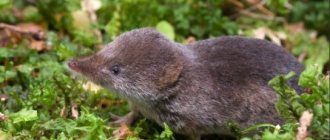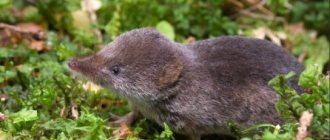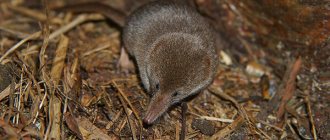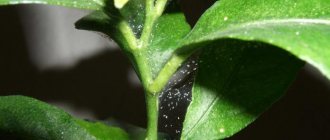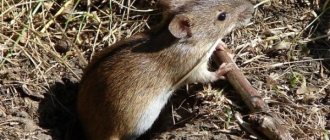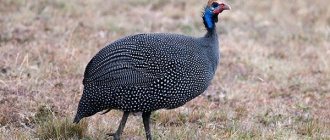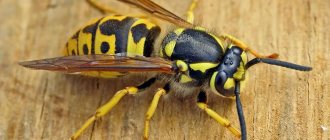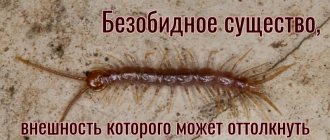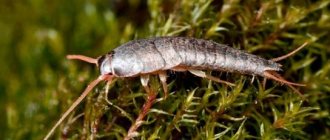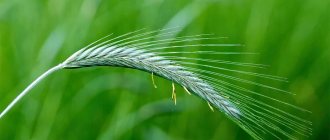What does a shrew look like: photo
Shrew.
Name: Shrews Lat.:
SorexClass: Mammals - Mammalia Order: Insectivores - Eulipotyphla or Lipotyphla Family: Shrews - Soricidae
| Habitats: | shaded areas of forests and steppes |
| What it eats: | small insects, bugs |
| Description: | carnivorous mammals that do more good than harm |
"SAW-32"
The shrew has 32 teeth, just like humans, but its teeth and jaws are designed completely differently. The incisors on the lower jaw are extended forward, resembling a pair of scalpels. On the upper jaw, on the left and right, there are five intermediate teeth of a conical shape, slightly sloping back towards the pharynx (like a gharial crocodile). The incisors, fused into one large tooth, with an additional tooth protrude forward. So shrews have an excellent weapon for capturing prey! The jaws of shrews only move up and down; these insectivores cannot grind food between the teeth by moving the lower jaw left and right. But the sharp cutting edges of the back teeth shred the chitinous cover of insects and spiders. The shrew is ready to forcefully close its jaws on any prey that fits between them, and then you can lift the midget predator from the ground by grabbing onto its trophy. Like all members of the genus, the tiny shrew has brown-colored tops of its teeth. This shade is associated with iron deposits, which make the animals' teeth more durable. However, with old age, the intermediate teeth wear down to the base, almost to the jaw. But the baby teeth of animals dissolve during embryonic development, so that they are born with a set of permanent ones.
The shape of the teeth is the main identifying feature by which outwardly similar species of shrews are distinguished from each other. And only the tiny shrew can be identified with confidence by the size of its body and skull! It is quite natural that it has almost the smallest skull among mammals - its length is 12-14.5 mm (smaller only in the pig-nosed bat - 11 mm). At the same time, the proportions of the body are amazing: half the length of the skull is the length of the dentition (about 6 mm), and the length of the skull is a third of the entire body length of the tiny shrew, from the base of the tail to the tip of the nose!
There is a common joke among zoologists: there would be no scarier predator on Earth if the shrew were the size of a cat. True, as body size increases, the need for food relative to body size decreases. Even the common shrew, which is 4-6 times heavier than a tiny one, eats not four, but twice its weight per day.
Description of the animal
The common shrew is a member of the shrew family, which is very widespread in many countries. She is the largest of the family members.
Appearance of the animal
Giant shrew.
The shrew looks very much like representatives of the mouse family, but has an oblong muzzle that looks like a proboscis. The body length of an adult animal is 5-8 cm. The tail can reach 6-7.5 cm in length.
Sometimes it is covered with sparse hairs. The weight of the mammal ranges from 4 to 16 grams.
The fur of the animal on the back is dark brown, almost black. The fur on the belly is light brown, sometimes off-white. The color of young individuals has a lighter shade. The ears are small and densely covered with fur.
Shrew lifestyle
Animals of this species are active mainly at night. During the day, shrews can go out in search of food only in a safe place where they can hide without problems. Animals most often move on the ground and do not rise to higher ground unless absolutely necessary.
The animals are quite nimble and can jump to a height of 10-15 cm. Shrews do not hibernate and continue to search for food all year round. During cold weather, animals seek shelter under snowdrifts, where they also find food.
Despite popular belief, the shrew does not dig. The animal's paws are not intended for these purposes. She is only capable of looking for insects in the upper, loose layers of soil, using her “proboscis”. The animal often uses ready-made burrows.
What does a shrew eat?
These small mammals are predators. They devote most of their time to searching for food. The animal's constant feeling of hunger is explained by its very fast metabolism.
In summer, the main food for the shrew are:
- larvae;
- earthworms;
- insect pupae;
- butterflies;
- dragonflies;
- mouse-like rodents.
In winter, the animal's diet consists of insects that hibernate in the upper layers of the soil. Once in pantries and cellars, the animal does not spoil food supplies, but only looks for wintering insects.
These mammals consume plant foods extremely rarely. Only in the cold season can shrews supplement their meager diet with nuts or seeds from spruce and pine cones.
Reproduction of shrews
Tiny shrew.
The female shrew gives birth to offspring 2-3 times a year. One litter usually produces 7-8 cubs. The duration of pregnancy of an animal is 18-28 days. The animals are born blind and naked, but already 30 days after birth they are able to find their own food. The lifespan of a shrew is on average 18 months.
Reproduction of shrews occurs only in the warm season. Before the birth of the cubs, the female prepares a nest, which she covers with moss or dry grass. Animals choose old stumps, abandoned holes, or convenient depressions in the upper layers of soil as a place to build a nest.
Characteristic
The tiny shrew is one of the smallest insectivorous creatures in Russia and Europe. The size of an adult individual including the tail is 6-7 cm, and the weight does not exceed five grams. It would be more correct to describe the tiny shrew with the silky fur of a soft coffee color on the back, which turns into light fluff on the belly. The tail, which is slightly more than half the length of the shrew's body, is also two-colored. The paws are not covered with fur.
In summer, the color of the animal fades slightly, and in winter it becomes richer. The animal's ears are small, but hearing is very well developed, as is touch and sense of smell. The elongated head ends in a proboscis nose with bristling vibrissae (long whiskers).
Shrews do not live more than a year and a half, and approximately a fifth of this short life is spent during their breeding season. Unlike most animals, the female's gestation period is not strictly fixed. The cubs will be born healthy in both 18 and 28 days. The average number of babies per litter is about five, but sometimes there are 8. During her life, an adult female gives birth to from 1 to two litters.
Some types
Shrews are a whole subfamily. There are more than 70 species. There are a few of the most common ones:
- common or forest, an animal common in thickets;
- tiny or Chersky, the smallest representative up to 4 grams;
- Tibetan, similar to ordinary, but living in mountainous areas;
- Bukhara, a high-mountain animal of light brown color with a tassel on the tail;
- medium, the white-bellied variety, lives mainly on the islands;
- giant, one of the rare representatives of the Red Book;
- small, small shrew, brown-gray with full fur.
Interesting Facts
In winter, shrews do not hibernate, but it is almost impossible to see them on the surface of the snow cover. Due to their overly bright colors, animals leave snowy areas only in situations of extreme necessity and when they are very hungry. This precaution could be called unnecessary, since the strong specific smell of the animal discourages predators from hunting, if not for owls - the only representatives of the predatory fauna who are not so whimsical.
Despite its small stature, the shrew is a carrier of a huge number of various parasites and mites. Insects settle in the animal's thick fur and often cause the death of shrews.
Another interesting fact is that the tiny shrew at any time of the year maintains the highest body temperature compared to all mammals on the planet - from 400C.
Most animals of this species live in the taiga - on average 350-400 shrews per 1 hectare, but in other areas of their habitat the existence of tiny creatures is under threat. In the Murmansk region, the tiny shrew is listed in the Red Book.
Shrew habitat
The shrew's habitat includes almost the entire territory of Eurasia. The animal especially prefers shady and damp areas. It can be found in meadows, forests and parks.
Shrews settle near people only in winter. They find shelter for themselves in cellars and storerooms.
Do shrews come into contact with people?
In the hungriest year, they can take you to a home.
What harm do they do?
If a shrew gets into a place where people store supplies, it will look for bugs and larvae.
How can you characterize the character of an animal?
Fast, nimble, predator. Prefers not to encounter people.
Reproduction and lifespan
The breeding season for animals begins in early spring, usually in March, and ends in late autumn.
During this period, the mother shrew is capable of giving birth to several litters (from two to four), each of which adds 3-9 cubs to the number of this species of insectivore.
The animal's pregnancy lasts about three to four weeks. And by the end of the gestation period, shrews build a nest among the roots of trees or stones. They build a home for their future children from leaves and moss, covering it with something soft for convenience.
Small shrews develop quickly, although they are born completely blind and with an unprotected, naked body. Over the next three weeks, from the moment of birth, they feed on mother's milk.
After two weeks, the cubs' pupils open and they begin to become covered with fur. And after 3-4 months they are already able to bear offspring. The animals live for about 18-23 months, but during this time they are able to multiply greatly.
SEVERE! SINGLE MOTHER
Shrews do not form pairs; they live alone; cubs from different males can be born in the same brood. During the summer, the female brings one or two litters of 4-6 naked, blind cubs. For about three weeks, the babies stay in the nest, where the female feeds them milk, then for a few more days they run after the mother in a “caravan”, when the first cub clings to the mother with its teeth, the second cub - to the first, and so on. Then the brood breaks up, the mother expels the cubs from her territory, and they go looking for free places. When passing through occupied territories, shrews behave cautiously. If the animals collide with each other, you can hear their sharp, rasping voice.
